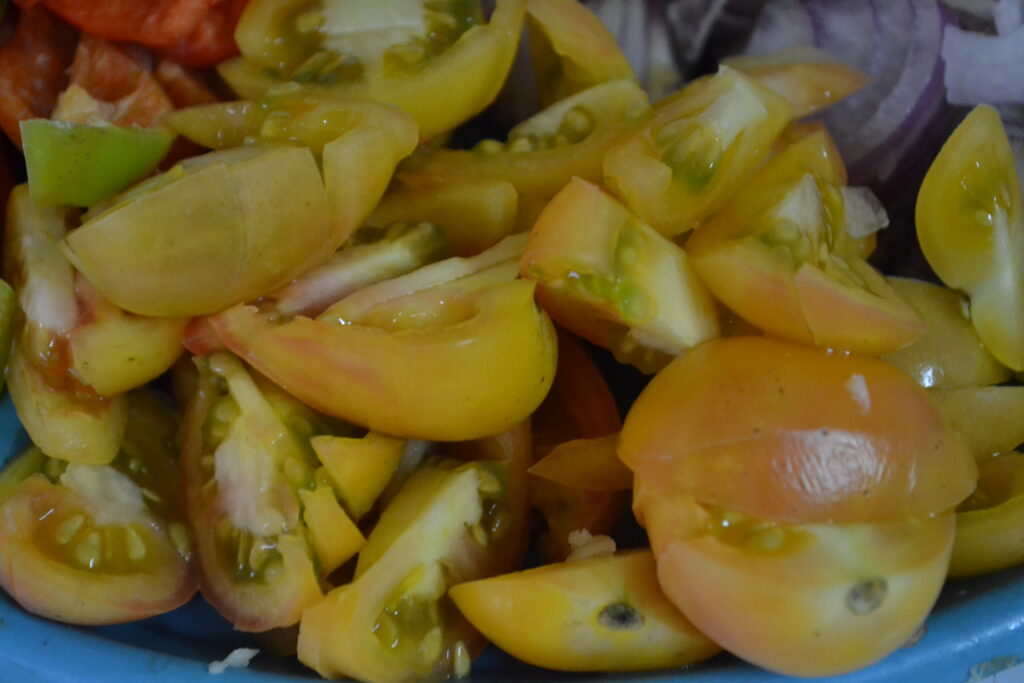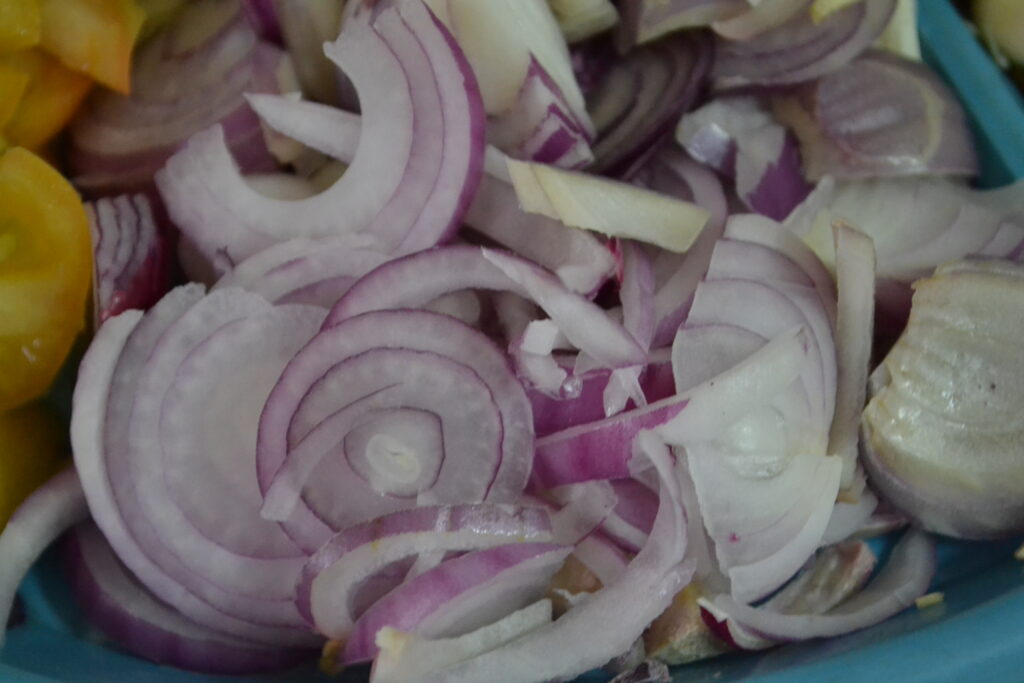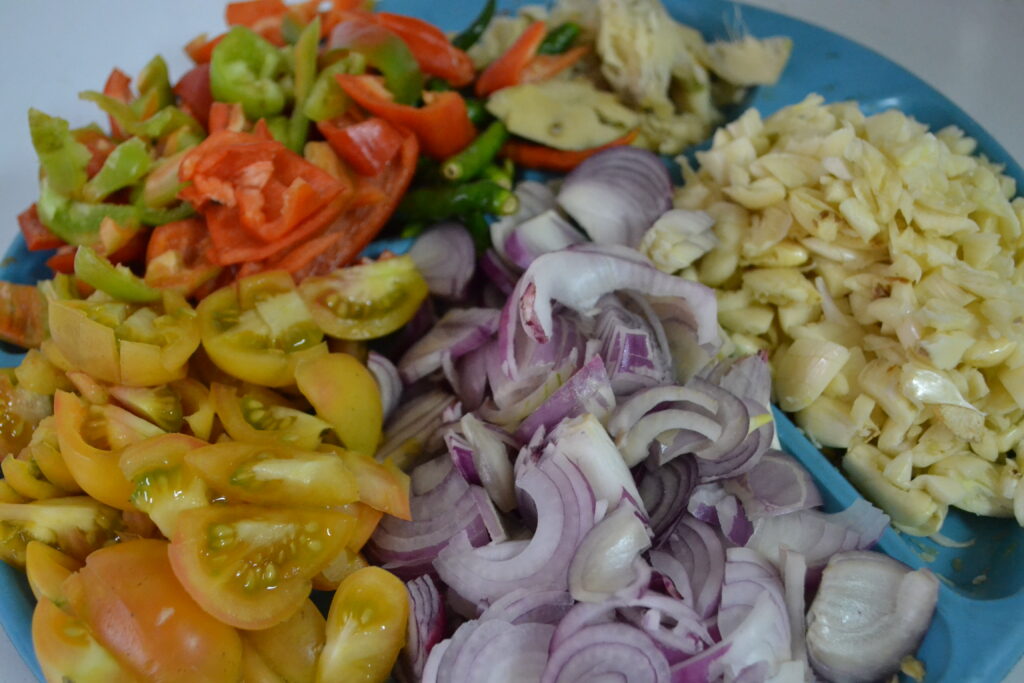Text and Photos by Henrylito D. Tacio
A spice is a dried seed, fruit, root, bark or vegetative substance used in nutritionally insignificant quantities as a food additive for the purpose of flavoring, and sometimes as a preservative by killing or preventing the growth of harmful bacteria.
In the Philippines, the two most popular spices are garlic and onion. The other two known spices are tomato and ginger. But these four are not only good for flavoring your bland foods; they also have healing powers.
Garlic, for instance, has been hailed as “nature’s herbal wonder drug.” In the past, it was said to strengthen the heart; protect against the plague; cure colds, athlete’s foot, toothache, and snakebite; repel vampires and demons; grow hair; stimulate sexual performance; and rid the dog of fleas.
Today, scientists all over the world are examining the folklore’s claims of garlic’s benefits. But the therapeutic qualities of garlic are nothing new. Sanskrit records reveal that garlic remedies were pressed into service in India 5,000 years ago, while Chinese medicine has recognized garlic’s powers for over 3,000 years. Even Louis Pasteur, who discovered penicillin, recognized the anti-bacterial powers of garlic back in 1858. During World War I, surgeons regularly used garlic juice to stop wounds turning septic.
So, what is it about garlic that makes it such a boon to our health? When cloves are chewed, crushed, or cut, they release a sulphur-bearing compound called allicin – the chemical that gives garlic its pungent aroma. And it’s the allicin that scientists have discovered is the magic ingredient thought to be responsible for garlic’s therapeutic qualities.
“Allicin is the remarkable agent that fights bacteria,” points out the editors of Super Life, Super Health. “It seems to even fight some infections that are normally resistant to antibiotics. But allicin is unstable and sensitive to heat,” the editors remind. “Cook the garlic lightly, if at all, and always mince it to release the most allicin.”
In 2007, a news story from the British Broadcasting Corporation reported that garlic may prevent and fight the common cold. “Garlic can actually kill germs and clear up your cold symptoms rapidly,” says Dr. Elson Haas, the author of Staying Healthy with the Seasons. He recommends two to three oil-free capsules three times a day.
If you have a sore throat, load up yourself with garlic. “When a sore throat is caused by a virus infection, as opposed to bacteria, eating garlic can bring quicker relief,” suggests Dr. Yu-Yan Hey, a nutrition professor who researches the healing properties of garlic.
Dr. Eleonore Blaurock-Busch, the physician behind The No-Drugs Guide to Better Health, recommends taking garlic oil capsules six times a day. She advises, though, that if the prescription causes you any adverse reaction, try another remedy.
Onions are found in a bewildering array of recipes and preparations spanning almost the totality of the world’s cultures. When eaten raw, onions may irritate the stomach. When that happens, milk is reportedly effective in neutralizing the effects.
Ancient Greek athletes consumed large quantities of onions because they felt it would “lighten the balance of the blood.” When Rome conquered Greece, the Roman gladiators were rubbed down with the onion to “firm up the muscles.”
In many parts of the world, onions are used to heal blisters and boils. In the United States, products that contain onion extract are used in the treatment of topical scars; some studies have found their action to be ineffective, while others found that they may act as an anti-inflammatory. Onions may be especially beneficial for women, who are at increased risk for osteoporosis as they go through menopause, by destroying osteoclasts so that they do not break down bone.
The ancient Egyptians had over 800 different prescriptions for medicines based on the onion. In the Middle Ages, physicians prescribed it to lessen headache and cure snakebite. The onion is said to fight cancer. In China, where the people eat more garlic and onions than anywhere else in the world, the rate of cancer is 40% less than other parts of the world.
In Georgia, where the Vidalia onion is grown, the rate of stomach cancer is 50% less than other parts of the nation. Extract of onion inhibits blood clotting. Onion reduces high cholesterol levels, and is said to stimulate the immune system. In people with diabetes, onion use lowers the fasting glucose level. Onion improves glucose tolerance and lowers insulin levels.
One bad thing about onions is that they can irritate your eyes. However, eye irritation can be avoided by cutting onions under running water or submerged in a basin of water. Rinsing the onion and leaving it wet while chopping may also be effective. Another way to avoid irritation is by not cutting off the root of the onion, or by doing it last, as the root of the onion has a higher concentration of enzymes.
Tomatoes are now eaten freely throughout the world, and their consumption is believed to benefit the heart, among other things. They contain lycopene, one of the most powerful natural antioxidants, which, especially when tomatoes are cooked, has been found to help prevent prostate cancer.
Tomato extract branded as Lycomato is now also being promoted for treatment of high blood pressure. Lycopene has also been shown to improve the skin’s ability to protect against harmful ultraviolet rays.
Dr. C. C. Thakur, in his book Introduction to Ayurveda, has said that it improves the digestive system and cures chronic diseases of the stomach. It is a blood purifier, cures anemia, piles, liver troubles, and chronic fever.
In his book, Miracles of Fruits, Dr. G. S. Verma has written that tomato is a sort of fruit and should better be taken uncooked. It removes constipation and strengthens teeth. Being a rich source of vitamin A, it is a dependable preventive against eye troubles. It also contains a good amount of vitamin C and is a very effective preventive and curative of scurvy. It is also very good for stomach disorders. It contains not only vitamins A, B, C, and G but also other minerals like iron, calcium, sulphur and potassium.
“Everything good is found in ginger,” so goes a popular Indian proverb. Ginger has been used medicinally in Asia for millennia. In China, for instance, a drink made with sliced ginger cooked in sweetened water or a cola is used as a folk medicine for the common cold. In India, ginger is applied as a paste to temples to relieve headache.
The ancient Greeks welcomed the arrival of ginger and quickly put it to good use as a digestive aid. To lighten the load of a big meal placed on the digestive system, the Greeks would end an evening of fabulous fasting by eating some ginger wrapped in bread. Eventually, this practice evolved into the world’s first cookie – gingerbread.
In the United States, ginger is “generally recognized safe” by the Food and Drug Administration, though it is not approved for the treatment or cure of any disease and is sold as an unregulated dietary supplement.
Motion sickness can make even the most enthusiastic traveler miserable. A 1982 study revealed that people prone to motion sickness who took ginger lasted 57 percent longer in a computerized rocking chair than people who took over-the-counter remedies. Another study showed that taking two to four capsules of dried ginger before traveling in a car, boat, plane, or trains prevented motion sickness in 90 percent of the people who participated in the study.
“To combat travel sickness, take a quarter of a teaspoon of powdered ginger or a one centimeter slice of fresh root ginger at least 20 minutes before you get in the car or board a ferry,” suggests an article which appeared in Reader’s Digest.
The Minnesota-based Mayo Foundation for Medical Education and Research recommends ginger for nausea and vomiting. It instructs, “To prevent nausea after surgery, ginger has been given as one gram by mouth one hour before surgery. For chemotherapy-induced nausea, capsules of ginger root powder have been given orally one gram per day for 5 days, starting on the first day of chemotherapy.”




